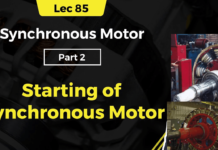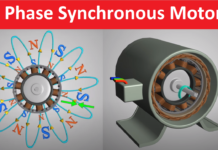Synchronous Condenser:
An over-excited synchronous motor has the ability to supply reactive power in such condition synchronous motor is called a synchronous condenser. Here the motor will not be connected with any load and the shaft spins freely. Synchronous Condenser is also called as phase modifier or Synchronous Compensator or synchronous capacitor. Here condenser is nothing but a capacitor.
What is overexcitation:
While you increasing the field current to the synchronous motor increases the induced emf Eb in the stator winding. If the induced emf of the synchronous motor is greater than the applied voltage (Eb > V) is called overexcitation.
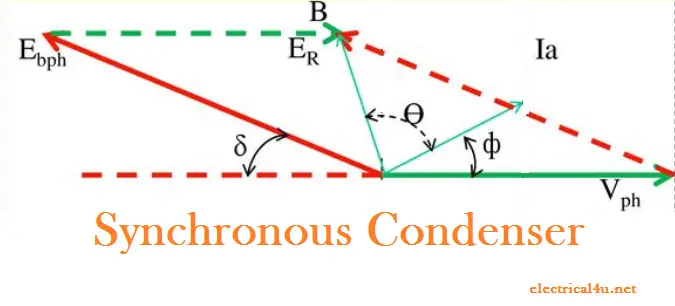
Refer to figure 1.1, Due to an increase in the magnitude of back emf Eb, the phase of resultant emf Er also changes. Also armature current Ia changes the phase from lagging to leading with respect to Vph since the impedance angle θ (Er ^ Ia = θ)is constant. Meanwhile, the load angle δ will be less.
Hence, the leading current start flowing from the motor to the power system. Such condition the power factor becomes leading in nature. The reactive power flows from the motor to the source. Due to supplying reactive power, the over-excited synchronous motor is called a synchronous condenser.
Advantages of synchronous condenser:
- The reactive power can be adjusted continuously.
- They are giving better performance than the static capacitor in the high voltage system
- Maintenance-free.
- A high degree of safety can be maintained.
- Higher life as compared with a capacitor bank.
- Even though a synchronous condenser is costlier than an equivalent capacitor bank on an individual basis, but the ability to supply reactor power of a synchronous motor is high which saves money for industrial plants.
Disadvantage:
- Field current needs to be monitored continuously
- Occupies high space.
- Continuous cooling needs to be arranged.
- High initial cost

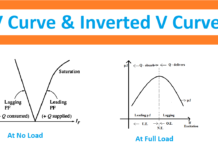
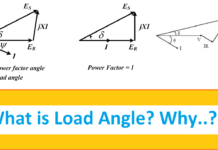
![Why Synchronous Motor is Not Self Starting [Simple Explanation]](https://electrical4u.net/wp-content/uploads/2020/06/Synchronous-motor-is-not-self-starting-218x150.png)

